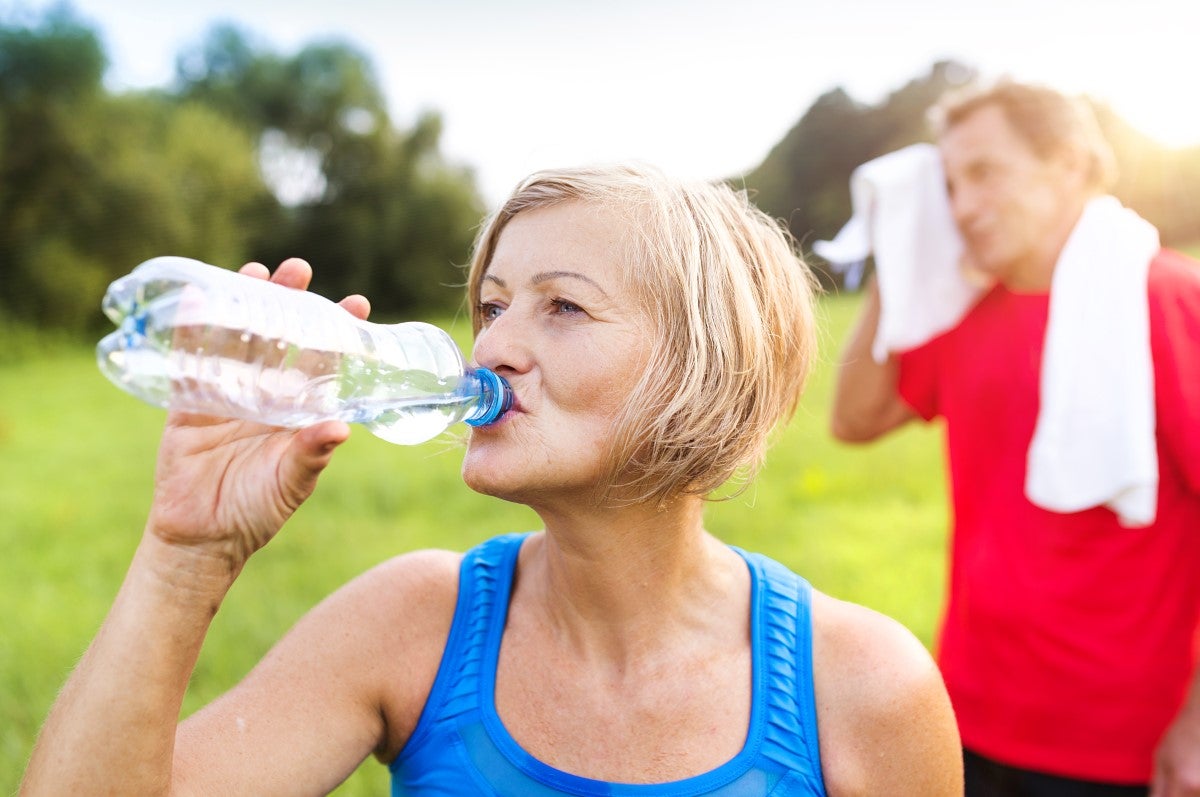It's the hottest time of year. Your risk of dehydration increases along with the temperature. When your body doesn't have enough water to function correctly, cramps, heat exhaustion, and even heatstroke, which can be fatal, can result from it.
Because of this, it's important to maintain sufficient hydration throughout the summer by replacing the water lost through sweating, breathing, and urinating. You typically replace the lost liquid by consuming liquids and foods that are high in water content. But if you lose too much water or don’t drink and eat enough, you can get dehydrated. And depending on how much fluid you lose, it can be severe.
How much water is enough?
Your daily fluid needs depend on several factors, including your gender, degree of activity and fitness, the weather, and any underlying medical conditions.
The conventional rule is to consume about half of your body weight (in pounds) in ounces. For reference, a 200-pound adult needs about 100 ounces of water daily.
As mentioned above, your degree of physical activity will affect your water needs. Therefore, for every 30 minutes of daily activity, you should add roughly 12 ounces of water to your total consumption.
An average, healthier person is drinking enough if they go to the bathroom every two to four hours and their urine is pale yellow in color.
What are some of the symptoms of dehydration?
There are some common and clear warning signs for dehydration, including:
- Bad breath – Your breath may be telling you that your body is running extremely low on water. Saliva has antibacterial properties in it, but lack of hydration can keep your body from producing enough of it. That can cause hydration-related bad breath.
- Extra yellow urine – The color of urine may be the best indicator of hydration. When you’re properly hydrated, your urine should be pale yellow. Producing very little urine or urine that’s dark yellow (or even orange) is a telling sign of dehydration.
- Headache and fatigue – When the body loses too much fluid, electrolytes like sodium and potassium are also lowered, altering the chemical makeup of the blood. That triggers a reaction in the brain in the form of headache and fatigue. The more dehydrated you become, the more a headache grows and the less energy you have.
- Thirst – It seems like a no-brainer, but thirst is an obvious sign of dehydration. Unfortunately, it can occur late in the process. The key to staying hydrated is drinking before you’re thirsty.
What are the best ways to stay hydrated?
When it comes to hydration, the best approach is drinking water. Make it your beverage of choice. Keep a water bottle in your car, on your bike, when you go to the beach, garden, golf, or wherever else you go and you’ll always be able to stay hydrated. It's free, environmentally smart and void of calories. Save the sports drinks for times when you’re exercising more than an hour or during high heat and humidity. Here are some other hydration tips to keep in mind:
- Limit sugar – When it comes to hydrating your body, choose something you enjoy drinking. Just keep in mind that you should limit the calories from added sugar to less than 10 percent of your total calories for the day. That's 200 calories, or about 12 teaspoons, for a 2,000-calorie diet. Liquid calories add up quickly so pick your fluids wisely!
- Eat fruits and vegetables – Food contains fluid, and none have more than fruits and veggies. Watermelon, grapes, berries, bell peppers, tomatoes, and other juicy produce contain tons of water to keep you hydrated.
- Be aware of alcohol – Alcoholic beverages can lead to additional fluid losses, so remember to drink in moderation. For every alcoholic drink, be sure to have one non-alcoholic drink. The American Heart Association recommends no more than two drinks per day for men and one drink per day for women.
- Don’t wait – One mistake that’s easy to make is waiting to drink until you feel thirsty. Thirst and dry mouth can be signs of mild dehydration. Even if you don’t feel thirsty, it’s important to drink regularly throughout the day and listen to your body!
So beat the heat this summer the easiest way you know how – by staying hydrated. It will make every other summer activity safer, healthier, and cooler. And you will be, too.

